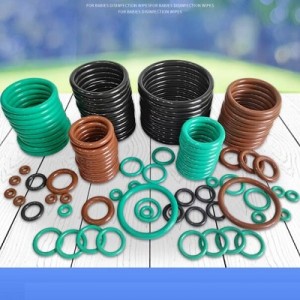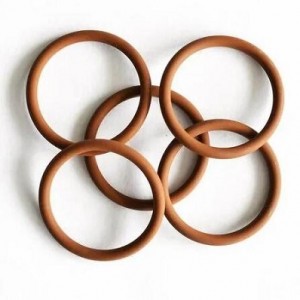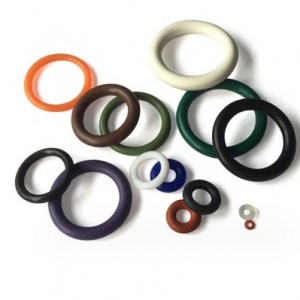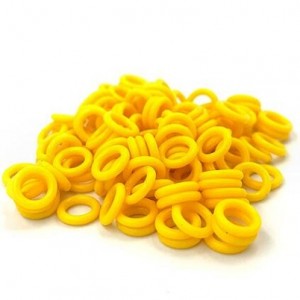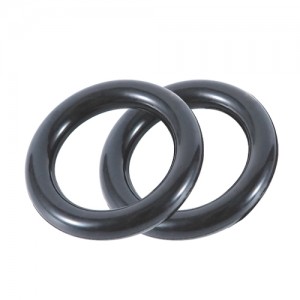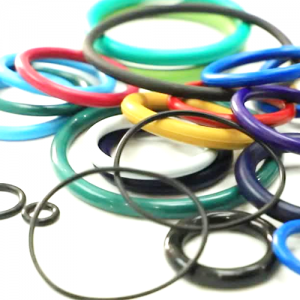TOP HIGH QUALITY FKM/FPM /VITON ORING MAT DULL FINISH PTFE COATED WITHOUT PFAS
TOP HIGH QUALITY FKM/FPM /VITON ORING MAT DULL FINISH PTFE COATED WITHOUT PFAS
PTFE Coated O-Rings Applications
Aegis, Aflas, Butyl, Fluorosilicone, Hypalon or any compound your specific application may require. Coated and Encapsulated O-Rings are another option also:
- Coated or Encapsulated – Coated O-Rings are PTFE coated, with the coating adhering to the O-Ring (usually Silicone or Viton or NBR ). Encapsulated O-Rings are an O-Ring (usually Silicone or Viton) covered with a PTFE tube. PTFE coating of O-Rings is an ideal low-friction coating where operational flexibility is a major consideration. The encapsulated O-Ring behaves like a high viscous fluid, any pressure on the seal is transmitted in all directions. Coated O-Rings are available in a wide array of colors.
- Special compounds of materials – If you have a requirement for a specific compound that is not the normal industry standard, we can work with manufacturers to produce that specific compound to meet your needs.
- Mil-Spec, Mil-Std or Milspecs is a United States defese standard used to achieve standardization objectives by the U.S. Department of Defense. Rockets Seals can source any Mil-Spec through our large network of reputable suppliers.
- FDA food grade material, foreign designations, USP, KTW, DVGW, BAM, WRAS (WRC), NSF, Underwriters Laboratories (UL), Aerospace (AMS) and Mil-Spec – Rocket has experience with meeting your needs across all industry standards.
you can choose following color or other more color.
Better known by the brand name Teflon, polytetrafluoroethylene (PTFE) provides a nonstick surface to cookware, nail polish, hairstyling tools, fabric/carpet treatment, and windshield wiper blades. However, manufacturers are seeing increased benefits from using PTFE as a way to manufacture quality O-rings. O-rings built using PTFE provide superior thermal and chemical insulation, and they can resist friction and water as well.
PTFE VERSUS TEFLON
Although they differ in branding, PTFE and Teflon share a common origin and properties.
PTFE
PTFE is a synthetic polymer derived from chemical bonding between carbon and fluorine, taking advantage of free radicals’ tendency to polymerize with tetrafluoroethylene. This material was accidentally discovered in 1938, when DuPont chemist Roy J. Plunkett attempted to create a new type of refrigerant, and mixed these materials together without knowing the reaction that it would cause.
TEFLON
Kinetic Chemicals, a partnership company between DuPont and General Motors, trademarked PTFE under the brand name Teflon in 1945. In essence, Teflon is PTFE. However, PTFE is also available under a variety of other brand names, such as:
- Daikin-Polyflon
- Fluon
- Dyneon
PROPERTIES
Several properties distinguish PTFE from other substances, including:
- Low friction coefficient: PTFE has the third lowest friction coefficient of any substance known to man, meaning that it’s really
- Functions at temperature extremes: Rated at 600 K, PTFE melts at 327ºC or 620ºF, and it also functions well at temperatures as low as −268ºC or −450ºF.
- Resists water: Water beads up on the surface of PTFE, meaning that surfaces treated with this material resist oxidation.
- Nonreactive: PTFE doesn’t react with the vast majority of corrosive substances, making it ideal for use in pipes, valves, seals, and O-rings.
PTFE’S HIGH TEMPERATURE RANGE
The temperature range (-1,000F to +4,000F), nonreactivity, water resistance, and low friction properties of PTFE make it an ideal material to build O-rings for use in a wide variety of applications. These properties make PTFE O-rings an ideal choice for weather-resistant applications as well as applications involving electricity and thermal insulation.
Due to their density, PTFE O-rings are not “melt-formed”—instead, they are compressed and sintered to provide the necessary shape.
TEFLON/PTFE SEALS
O-rings made of PTFE are present in a wide variety of industrial applications that require seals that can stand adversity. PTFE O-rings appear in many applications that are exposed to the following risk factors:
| Top Applications | Mechanical Weaknesses |
|---|---|
|
|
our factory use following to make all oring mat dull:



